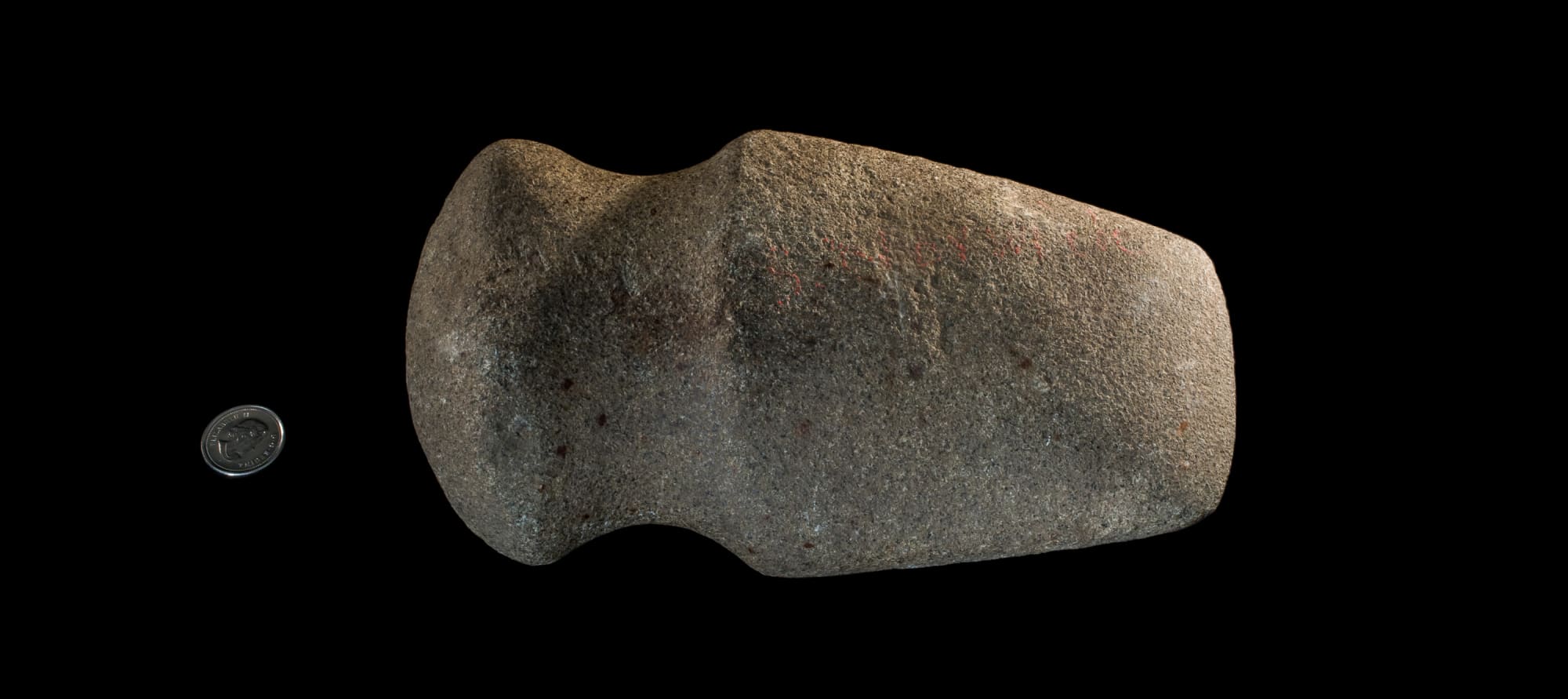Celts (Axe, Adze, Hatchet, Chisel) 004.99.2135, 004.99.2243, 004.99.1962, 004.99.2664, 004.99.2341 & 004.99.2240 and Gouges 004.99.2794 & 004.99.2795
Archaeologists use the term “celt” to refer collectively to (mostly) ground stone woodworking tools of various sizes, shapes, and functions. Many of these are familiar to us as chisels, wedges, hatchets, axes, adzes, splitting mauls, and gouges. Since wood rarely preserves in the environments we find in the Great Lakes area, these tools provide some of the best evidence of the range of woodworking tasks that they served. The large size of certain axes, adzes, and gouges suggest that they were used on relatively large projects, most likely dugout canoes. A few such canoes have been recovered from lakes in northern Ontario, where their waterlogged state has helped preserve the wood. Some of the oldest directly dated wood in Ontario is still in place at the Mnjikaning Fish Weirs National Historic Site of Canada. Situated at the Atherley Narrows between lakes Couchiching and Simcoe, this weir comprised hundreds of sharpened poles driven into the lakebed to direct and focus migrating schools of fish. The remnants of some of these poles have been radiocarbon dated to 5,100 years ago and the structure was still in operation when Samuel de Champlain passed by in September of 1615.



 Grooved axe
Grooved axe
 Re-worked tools
Re-worked tools